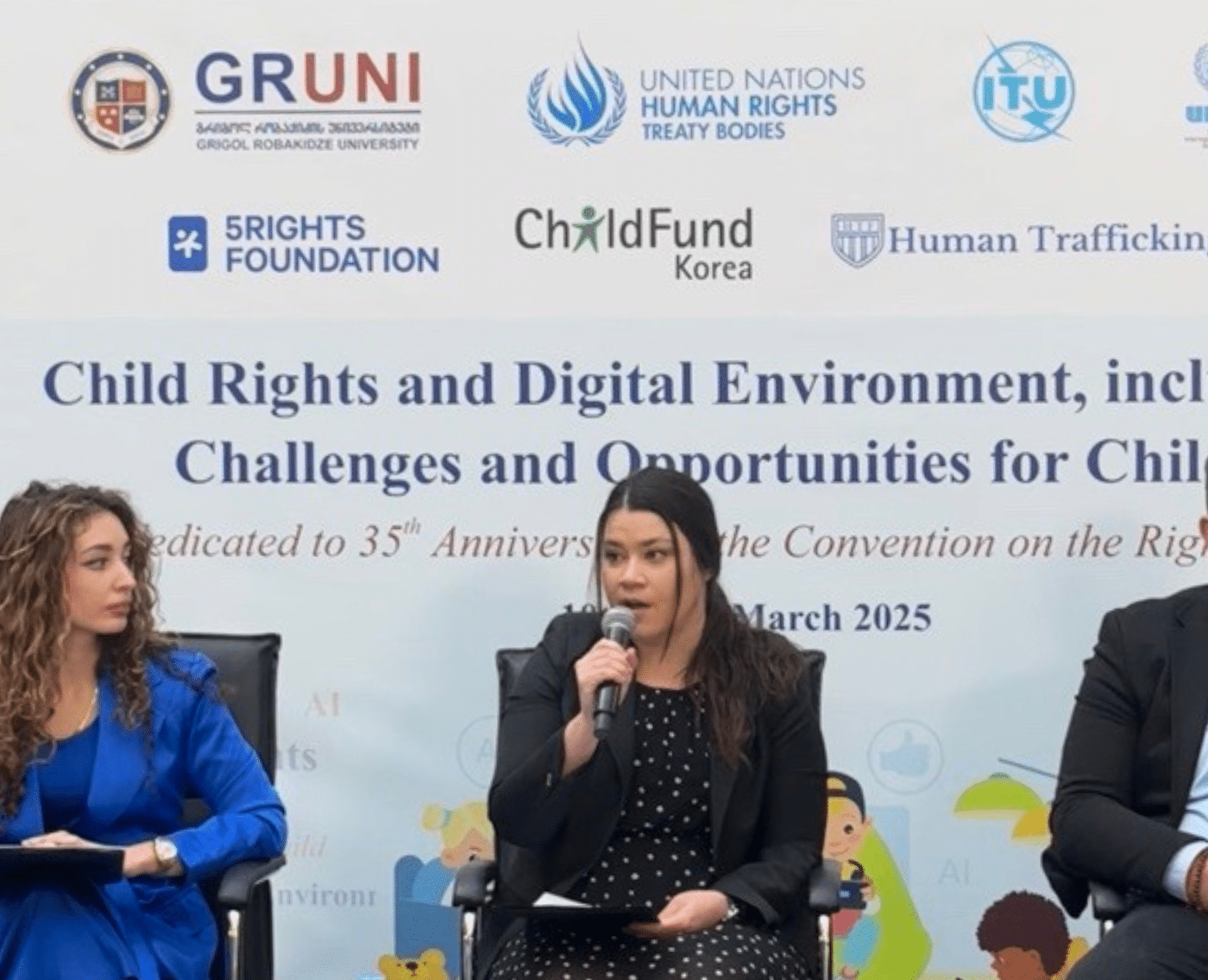UNCRC turns 35: AI moves fast, but it must not break children
AI is increasingly shaping children’s lives, yet it often prioritises profit over their wellbeing. The Children & AI Design Code aims to ensure AI serves, rather than exploits, the next generation.

AI increasingly mediates all aspects of children’s lives – powering the games they play, the tools they learn with, and even the welfare decisions that affect them. While children are twice as likely as adults to use Generative AI, they often struggle to distinguish between genuine digital interactions and AI systems designed to exploit their attention and data.
Despite tech companies framing AI as an unprecedented frontier, both its exploitative patterns and the technology itself are nothing new. As our research, Disrupted Childhood shows, AI has long been optimised to analyse, predict, and even dictate children’s thoughts and behaviours, prioritising profit over their wellbeing. Experience shows that technology is never beyond governance, and AI should be no different.
To mark the 35th anniversary of the UN Convention on the Rights of the Child (UNCRC), 5Rights partnered with the UN Committee on the Rights of the Child and the International Telecommunication Union to host the Conference on Children’s Rights and AI in Tbilisi.
Opening the conference, Baroness Kidron warned:
“For AI to serve humanity and live up to its great promise, it cannot be concentrated in the hands of a few unaccountable businesses and built on the violation of children’s rights. If AI, like other technologies before it, moves fast and breaks things, we must act on the consensus that it may not break our children.”
Contrary to industry narratives, the conference showed that regulation does not stifle innovation – it enables it. Proper regulation ensures AI and innovative technologies can enhance children’s lives rather than endanger them. Crucially, it also levels the playing field so that companies prioritising safety are not undercut by those willing to compromise on it. When left unchecked, AI is shown to hinder children’s critical thinking skills, jeopardising their development and future prospects.
The UNCRC was developed in parallel to the rise of the internet. 35 years later, its principles remain vital in the age of AI. In 2021, General comment No. 25 reaffirmed that children’s rights do not end where technology begins. AI cannot be an exception.
Speaking at the conference, Marie-Ève Nadeau – 5Rights Head of International Affairs – underscored the urgency of action:
“Tech companies’ commitments to combat AI-generated Child Sexual Abuse Material or to champion free speech ring hollow when the systems they build fuel exploitation, amplify abuse, and harm children. Voluntary measures have failed. We must act now to ensure AI serves rather than exploits children.”
35 years after its articulation, the UNCRC is the most widely ratified human rights treaty. To build on this consensus, 5Rights is launching the Children & AI Design Code, a protocol for identifying, evaluating, and mitigating the risks of AI to children while ensuring their rights and developmental needs remain central.
The Code mandates certain expertise and processes to embed children’s rights in AI development. It also provides critical questions designed to identify gaps and risks for children.
With the right guardrails in place, AI can support children’s learning, wellbeing, and creativity rather than eroding their rights and agency. The Children & AI Design Code provides a blueprint for making that future a reality.
